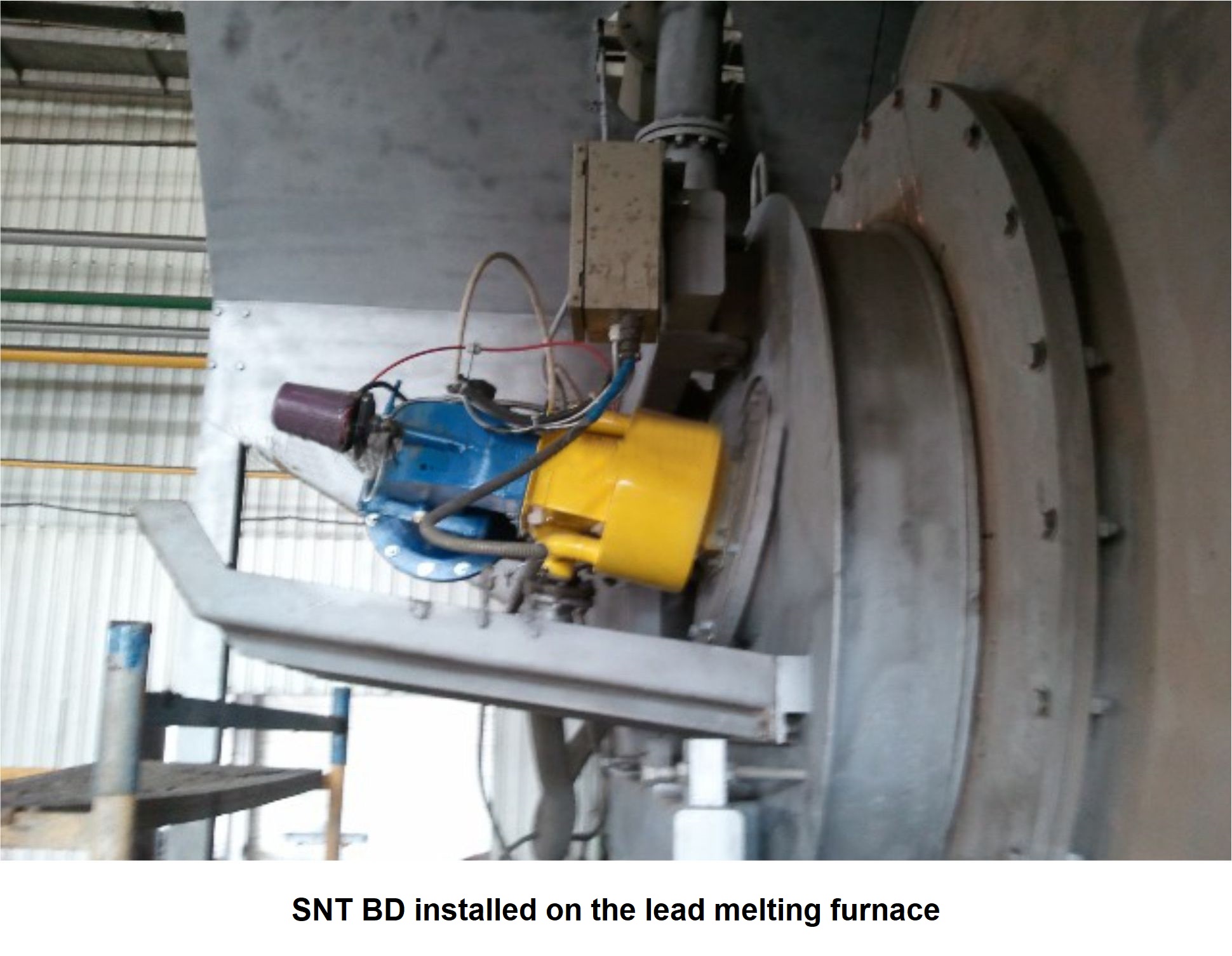Modernization of the rotary furnace for ferronickel roasting showed the following:
- despite the fact that additional equipment was installed on the furnace, which changed and complicated the entire technological cycle, namely, new cyclones of increased resistance and an electrostatic cleaning unit, which led to an actual complication of the working process and deterioration of working conditions for the BD and an increase in the amount of heated substance, new SNT BDs allowed to ensure reliable uninterrupted operation of the furnace in a wide range of loads from 500 to 4500 m3/h;
- high uniformity of the temperature field at the outlet of the SNT BD, as well as a significant (several times) reduction in the length of the flame, made it possible to dramatically accelerate the heat intensity of the furnace volume in the part of the furnace adjacent to the BD and, thereby, improve the heating of the cinder at high relative consumption of the roasted material;
- elimination of local overheating, which took place during operation using old BDs, as well as contact (throwing) of high-temperature tips of a long flame with expensive refractories of the furnace lining and a higher uniformity of the temperature field, provided the lining with more favorable temperature condition, and, consequently, its durability;
- a uniform temperature field of combustion products, the absence of a high-temperature flame core makes it possible to exclude sintering and a decrease in the quality of the main product, and the possibility of creating an elevated temperature level in the furnace volume allows an increase in the furnace rotation frequency and, as a consequence, an increase in productivity;
- the specific fuel (natural gas) consumption per unit of the final product (cinder) output reached 144 m3/t in accordance with the Comparison Protocol dd. 02.10.2007, compared to the specific consumption before the modernization —193 m3/t;
- The compressor air used for blowing out the embrasures was replaced with atmospheric air used in the furnace technological process.
- Part of the furnace suction cups was used in the technological process for CO afterburning.
- The use of burners made it possible to improve the use of fuel and flue gases heat in the cold bath during the material charge and heating period, due to which the oxidation of metal was reduced and the steel yield increased during these periods.
- The efficient use of fuel and process gases heat ensured a higher productivity of the furnace.
- Due to a decrease in the temperature of the offluent gases, the water consumption in slag pockets was reduced. The number of melts with a carbon content at the outlet decreased and reached a value of less than 0.07%.
The use of stream-niche technology for burning gaseous fuel made it possible to modernize different rotary furnaces of various purposes. These are pulp driers for sugar industry, furnaces for roasting ferronickel ore, titanium dioxide and keramzit and asphalt complexes in the construction industry, etc.
|


|





